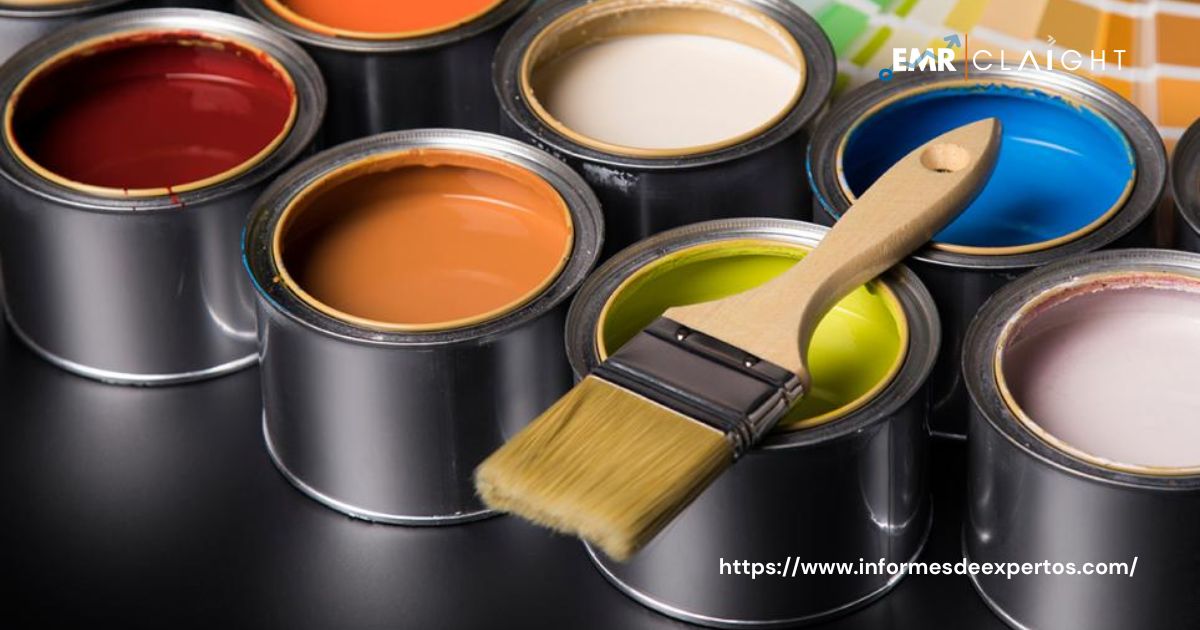The paints and coatings market constitutes a vital segment of the chemical industry, encompassing the production, distribution, and application of various coatings and paint products used for protection, decoration, and functional purposes. From architectural coatings that beautify and safeguard buildings to industrial coatings that enhance durability and performance, the sector serves diverse end-user industries and applications worldwide.
Overview:
Paints and coatings play a multifaceted role in modern society, serving aesthetic, protective, and functional purposes across residential, commercial, industrial, and automotive sectors. These products are formulated using a blend of chemicals, pigments, binders, solvents, and additives to achieve desired properties such as color, durability, corrosion resistance, and weatherability. The paints and coatings market encompasses a wide range of products, including architectural paints, industrial coatings, automotive coatings, marine coatings, and specialty coatings tailored for specific applications.
Market Dynamics:
The paints and coatings market is influenced by various factors, including economic conditions, construction activity, industrial production, technological advancements, environmental regulations, and consumer preferences. Understanding these dynamics is essential for stakeholders to navigate the market landscape effectively.
- Construction and Infrastructure Spending: The demand for paints and coatings is closely tied to construction and infrastructure development activities. Growth in residential and commercial construction, urbanization trends, and infrastructure investments drive demand for architectural coatings used in building exteriors, interiors, and infrastructure projects.
- Industrial Production and Manufacturing: Industrial coatings play a crucial role in protecting equipment, machinery, and infrastructure from corrosion, wear, and chemical exposure. Industrial production activities, including automotive manufacturing, aerospace, oil and gas, and electronics, drive demand for specialized coatings tailored to meet performance and regulatory requirements.
- Technological Advancements: Advances in coating technologies, formulations, and application methods enhance performance, durability, and environmental sustainability of paints and coatings. Innovations such as waterborne coatings, powder coatings, high-performance polymers, and nanotechnology enable manufacturers to develop products with improved properties and reduced environmental impact.
- Environmental Regulations: Stringent environmental regulations aimed at reducing volatile organic compound (VOC) emissions, hazardous air pollutants, and environmental impact drive the adoption of eco-friendly and low-VOC coatings. Regulatory compliance requirements influence product formulations, manufacturing processes, and market strategies of paint and coating manufacturers.
- Consumer Preferences and Trends: Changing consumer preferences, aesthetic trends, and lifestyle choices influence the demand for decorative paints, specialty finishes, and color options. Consumer awareness of health, safety, and sustainability considerations drives demand for eco-friendly, non-toxic, and low-odor paints and coatings.
Key Players:
The paints and coatings market is characterized by a diverse array of global, regional, and local manufacturers catering to specific industry segments and applications. Some of the key players in the global paints and coatings industry include:
- AkzoNobel: AkzoNobel is a leading global manufacturer of paints, coatings, and specialty chemicals, offering a comprehensive portfolio of decorative, industrial, and specialty coatings for various applications. The company’s brands include Dulux, Sikkens, International, and Interpon.
- PPG Industries: PPG Industries is a multinational manufacturer of paints, coatings, and specialty materials, serving customers in sectors such as automotive, aerospace, construction, and industrial. The company’s product portfolio includes automotive OEM coatings, industrial coatings, and architectural paints under brands like PPG, Pittsburgh Paints, and Olympic.
- Sherwin-Williams Company: Sherwin-Williams is a major producer of paints and coatings, offering a wide range of products for architectural, industrial, and automotive applications. The company’s brands include Sherwin-Williams, Valspar, and Minwax, among others.
- Axalta Coating Systems: Axalta is a leading global supplier of liquid and powder coatings for automotive, transportation, and industrial markets. The company’s product offerings include automotive OEM coatings, refinish coatings, and industrial coatings under brands such as Cromax, Spies Hecker, and Imron.
- BASF SE: BASF is a diversified chemical company that manufactures coatings, pigments, and additives for various applications, including automotive, construction, and industrial coatings. The company’s product portfolio includes coatings solutions under brands like Glasurit, R-M, and Baslac.
Future Outlook:
The paints and coatings market is poised for continued growth and innovation driven by urbanization, infrastructure development, technological advancements, and sustainability initiatives. Key trends shaping the future of the industry include:
- Sustainable Coatings and Green Chemistry: Growing emphasis on environmental sustainability and regulatory compliance drives the development of eco-friendly coatings with reduced VOC emissions, renewable raw materials, and enhanced durability. Green chemistry principles and life cycle assessments guide the formulation and manufacturing of sustainable coatings solutions.
- Digitalization and Industry 4.0: The adoption of digital technologies such as IoT (Internet of Things), AI (Artificial Intelligence), and data analytics enables predictive maintenance, smart coatings applications, and real-time monitoring of coating performance. Digitalization enhances efficiency, quality control, and customer engagement throughout the coatings value chain.
- Advanced Functional Coatings: Increasing demand for coatings with specialized functionalities such as self-healing, anti-microbial, anti-corrosion, and thermal management properties drives research and development efforts. Advanced functional coatings cater to emerging applications in automotive, electronics, healthcare, and energy sectors, offering enhanced performance and longevity.
- Customization and Personalization: Consumer demand for customizable and personalized coatings solutions drives innovation in color matching, specialty finishes, and decorative effects. Digital color tools, tinting systems, and virtual reality applications enable customers to visualize and customize coatings options to suit their preferences and design requirements.
- Circular Economy and Recycling: The adoption of circular economy principles promotes resource efficiency, waste reduction, and recycling initiatives within the coatings industry. Closed-loop recycling of raw materials, sustainable packaging solutions, and product stewardship programs contribute to a more sustainable and circular coatings value chain.


